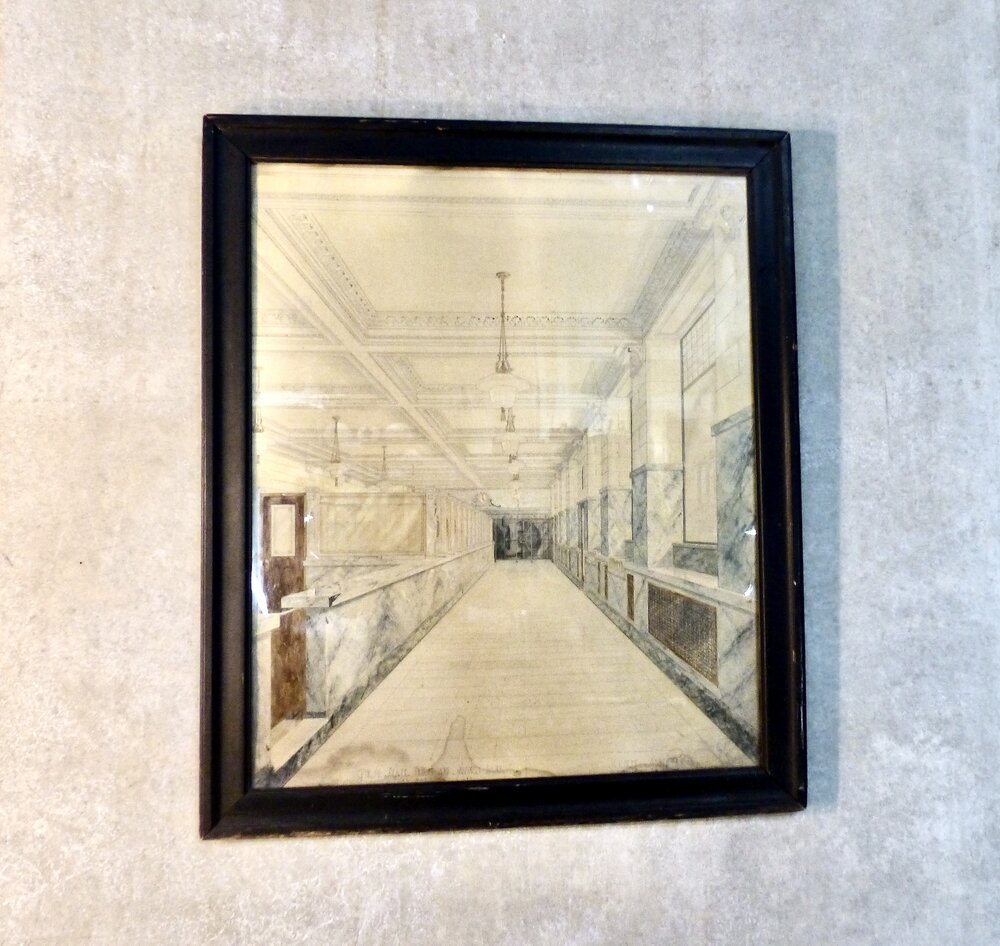
Circa 1915 Architectural Rendering in Watercolour
- Regular price
- $1.00 CAD
- Sale price
- $1.00 CAD
- Regular price
-
Description
37H” x 32W”
An original architectural rendering (in watercolour) created by specialist bank architect, Joseph Scheitler, on behalf of the First State Trust and Savings Bank, of East Chicago, Indiana. Signed and annotated; original solid wood frame.
The new home of the United States National Bank is the tallest building in the city of East Chicago, and is owned by Colonel Walter J. Riley, founder and president of the United States Bank. It replaces the original banking home, which was erected in 1915 when the institution was founded as the First State Trust and Savings Bank.
East Chicago’s first skyscraper, built in 1915. “The new home of the United States National Bank is the tallest building in the city of East Chicago, and is owned by Colonel Walter J. Riley, founder and president of the United States Bank. It replaces the original banking home, which was erected in 1915 when the institution was founded as the First State Trust and Savings Bank.
Designed by Joseph Scheitler, architect and bank specialist, the new banking home presents many unusual features, both as a beauty and utility. Imported Italian marble is used for the walls, and the floors are of terrazza with brass strips. The decorated ceilings are of Celotex, making for sound absorption qualities. Massive bronze chandeliers illuminate the banking room.”


